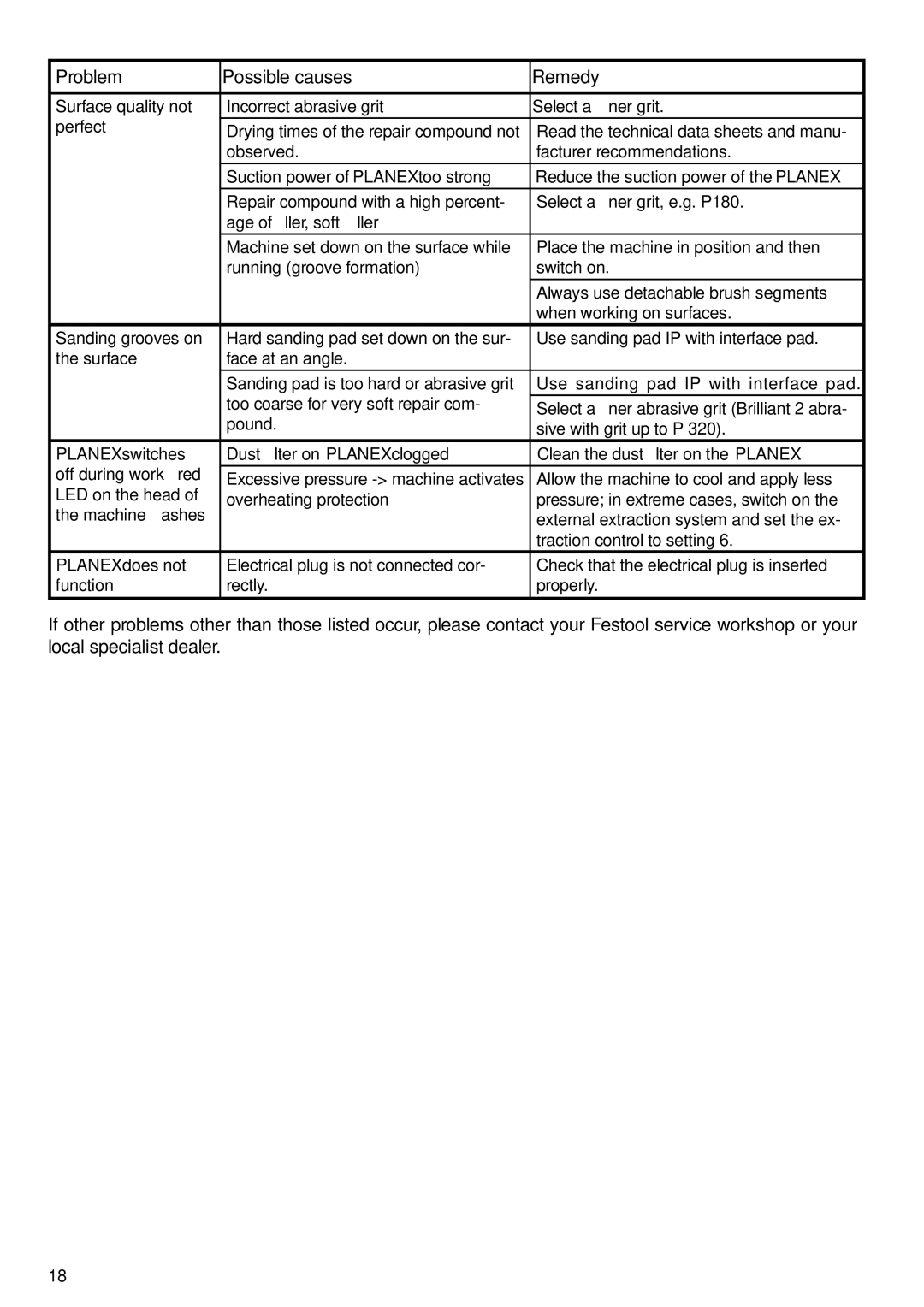Problem | Possible causes | Remedy |
|
|
|
Surface quality not | Incorrect abrasive grit | Select a finer grit. |
perfect |
|
|
Drying times of the repair compound not | Read the technical data sheets and manu- | |
| observed. | facturer recommendations. |
| Suction power of PLANEX too strong | Reduce the suction power of the PLANEX |
| Repair compound with a high percent- | Select a finer grit, e.g. P180. |
| age of filler, soft filler |
|
| Machine set down on the surface while | Place the machine in position and then |
| running (groove formation) | switch on. |
|
| Always use detachable brush segments |
|
| when working on surfaces. |
Sanding grooves on | Hard sanding pad set down on the sur- | Use sanding pad IP with interface pad. |
the surface | face at an angle. |
|
| Sanding pad is too hard or abrasive grit | Use sanding pad IP with interface pad. |
| too coarse for very soft repair com- | Select a finer abrasive grit (Brilliant 2 abra- |
| pound. | sive with grit up to P 320). |
PLANEX switches | Dust filter on PLANEX clogged | Clean the dust filter on the PLANEX. |
off during work – red |
|
|
Excessive pressure | Allow the machine to cool and apply less | |
LED on the head of | overheating protection | pressure; in extreme cases, switch on the |
the machine flashes |
| external extraction system and set the ex- |
|
| traction control to setting 6. |
PLANEX does not | Electrical plug is not connected cor- | Check that the electrical plug is inserted |
function | rectly. | properly. |
If other problems other than those listed occur, please contact your Festool service workshop or your local specialist dealer.
18
